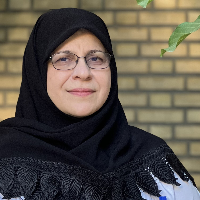A metagenomics investigation of bacterial communities in gold mine tailings
Gold mine operations release toxic arsenic and other heavy metals into the environment, which can be accumulated in water resources and the food chain. As microbial bioremediation has been a promising method for pollutant removal from contaminated sites, the identification of bacterial communities in arsenic-contaminated resources has recently been in focus. The bacterial communities of tailings dam effluent (TDE) of a gold mine in Iran were analyzed. The bacterial communities were examined using the next-generation sequencing method (Illumina platform) targeting the V3-V4 region of 16S rRNA genes. The 16S rRNA dataset from this study was compared with three arsenic-contaminated groundwater (GW) microbiomes from SRA databases, using the bioinformatics tool QIIME 2. Our findings revealed that the prevalent taxonomic groups observed in all of the samples belonged to Proteobacteria (8.06-45.49%), Bacteroidetes (1.85-50.32%), Firmicutes (1.00-6.2%) and Actinobacteria (0.86-5.09%). Metagenomic analyses showed that Algoriphagus, Rhodobacter, Anaerospora, Limnobacter, Halomonas and Yonghaparkia are the main bacterial genera in TDE. Despite the limited similarities in the prokaryotic community of the samples, the most of the retrieved genera of the TDE are unique and the native bacteria of Iran. Conclusions Long-term exposure to arsenic causes changes in bacterial abundance and richness. This resulted in natural selection and expression of the most compatible genes in existing condition. Although there are similarities in some microbial communities of ground waters, but it can be found some native microorganisms, which was adapted to the harsh environment of TDE.
-
Detection of SARS-CoV-2 in hospital wastewater during the Covid-19 pandemic
Elahe Mobarak Qamsari, *, Mahtab Baghban
Journal of Microbial World, -
Biological Capacity of Desert Regions (Part 1: Bacterial Diversity)
Maryam Teimouri *, Adel Jalili, Parisa Mohamadi
Iran Nature,


